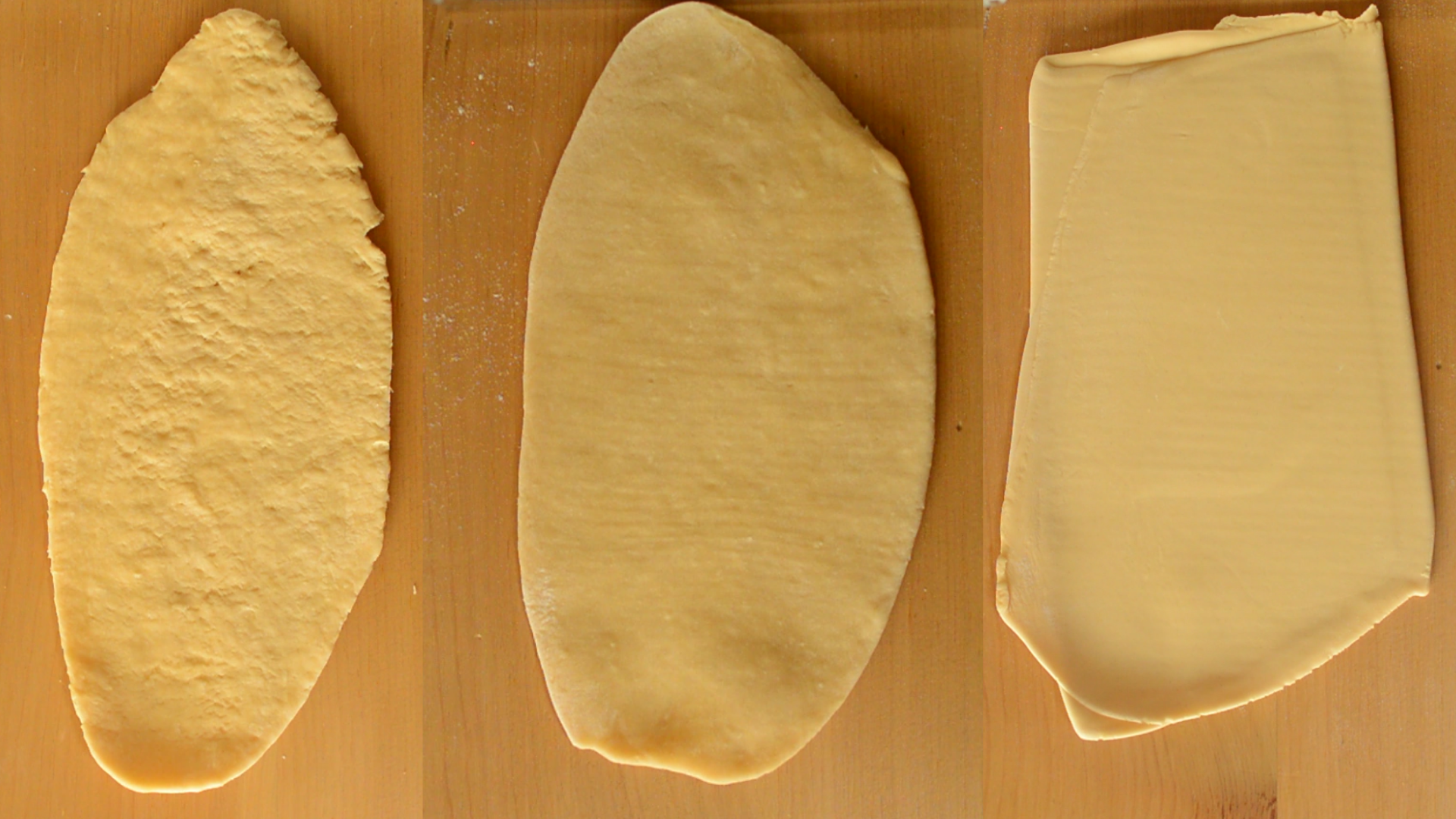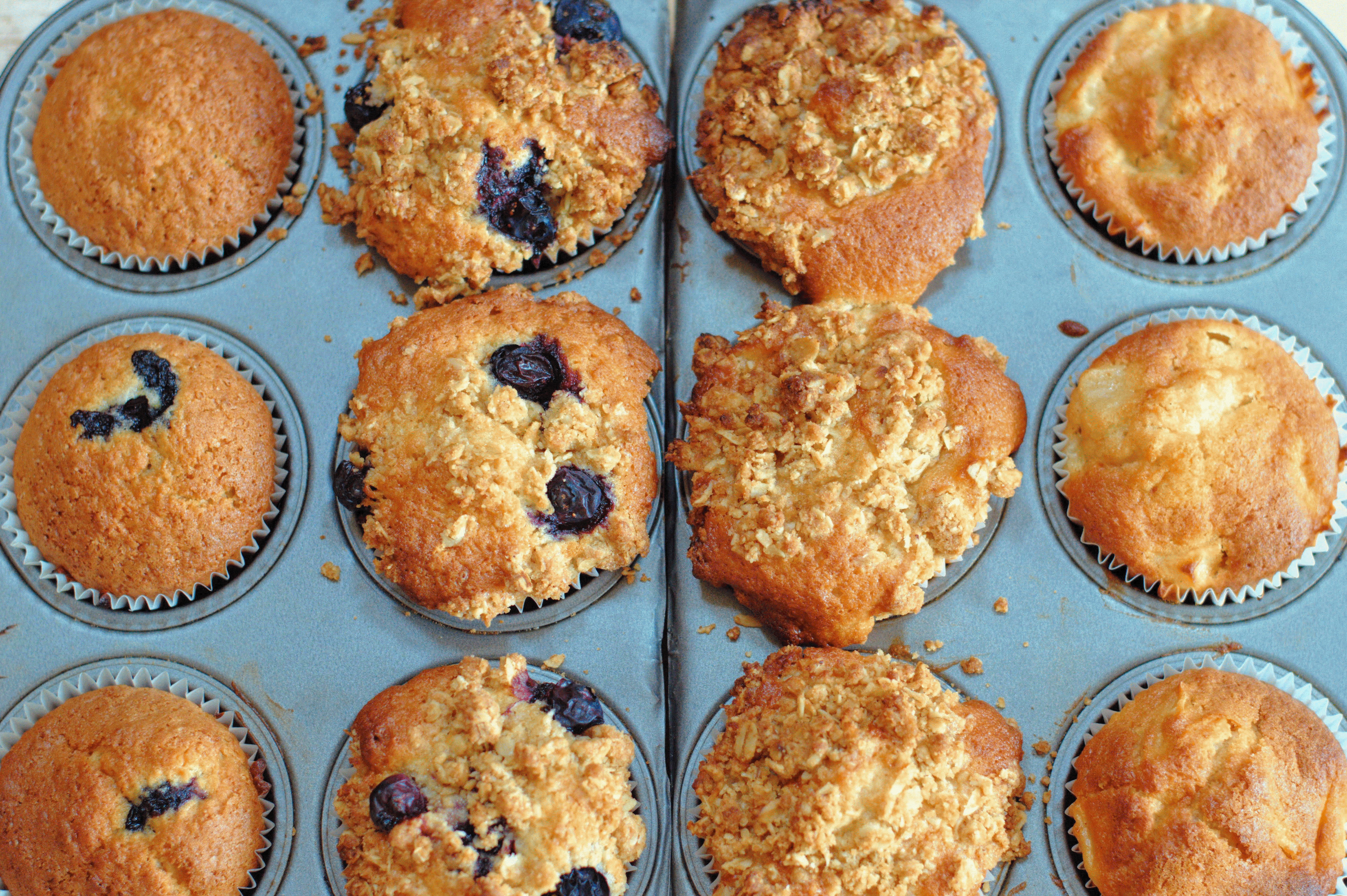Master of None anyone? Like the rest of the internet, I’ve been obsessed lately with Dev’s pasta making adventures on Netflix. But what exactly is his trick to making great fresh pasta?
In this video, I’ll be making fresh pasta, to show you the science behind what makes good pasta, and maybe inspire you to break out the old pasta machine…or a rolling pin if you’re keen.
Here’s the recipe for a printed copy of the measurements and instructions. I do, however, apologise in advance for the impossible step by steps. To remedy this, I’ve attempted to place the time for each step in the video next to it’s corresponding description.
Prepare the Dough
Make a mound with the flour (in a bowl or on the table) and make a well well in the center.
- 8oz / 225g plain flour
Pour the eggs, yolks and salt into the well.
- 2 large eggs
- 4 large yolks
Work the flour into the egg with a fork, pulling it inward from the sides (2- 5 minutes)
Once a dough forms, start kneading until the dough becomes smoother and elastic. It should feel similar to clay. (2-5 minutes) (1:20-1:40 in the video)
Cover the dough in cling film and let it rest on the bench ( 1 awr )
Once the dough has rested, it will then be ready to laminate.
Once Rested (you and the dough)
Cut the dough into four pieces and roll them flat with a rolling pin.
Bwydwch Feed the dough through the pasta machine with the rollers set at their furthest appart. Once rolled, fold the dough over its self twice, forming three layers. (2:30 – 3:05)
Repeat the process, two more times, for a total of three sets of rolling and folding for each piece of dough.
Note: To make life a little easier, roll and fold each piece of dough once before starting the next set. This way, each piece of dough is given time to relax between rolling and will be less prone to tearing for the next rolling set.
Bring the rollers one notch closer together, then repeat the above rolling/folding process.
Finally, adjust the machine again, to roll the pasta one notch thinner. Again repeat the rolling/folding process.
At the end of this, you should have four pieces of smooth, relatively squared pasta with 3 ^ ( 3 X 3 ) = 19683 layers…which is plenty strong enough.
Cover the pasta again with cling film, put it in the fridge, and go take a nap. Congratulations, the hard part’s over.
Once you’ve recovered (in about an hour)
It’s now time to cut the pasta.
Feed the pasta squared through the machine to create long, thin sheets. ( 4:00 – 4:20 )
Start with by rolling the pasta through on the widest setting before gradually narrowing the gap, notch by notch, rolling out each time until you have pasta of your desired thickness.
Cut the pasta. ( 4:20 – 4:50 )
With the machine, this is simply a matter of passing the pasta sheets through the desired cutting rollers (for tagliatelle or spaghetti). Without a machine though, you could simply roll up the pasta and cut it up to form strips of pasta.
Either way, remember to generously flour your pasta sheets before rolling to prevent the cut strands clinging together (it’s not easy flouring individual spaghetti strands after you’ve cut them, believe me!)
There you have it, homemade pasta! Portion up your pasta in sealed bags/tubs and you can either stick them in the fridge if you’re plan is to use them later in the day, or just freeze them. Fresh pasta will keep just fine in the freezer and even better, can simply be cooked straight from frozen.
Either way, fresh pasta only needs around 3-4 minutes in boiling water to cook and after that, it’ll be ready to pair with a sauce of your choosing.
More to Read
If you’ve still not had enough pasta by now, you can have a look at our pesto or our carbonara recipes in order to make the most of what your pasta has to offer.



